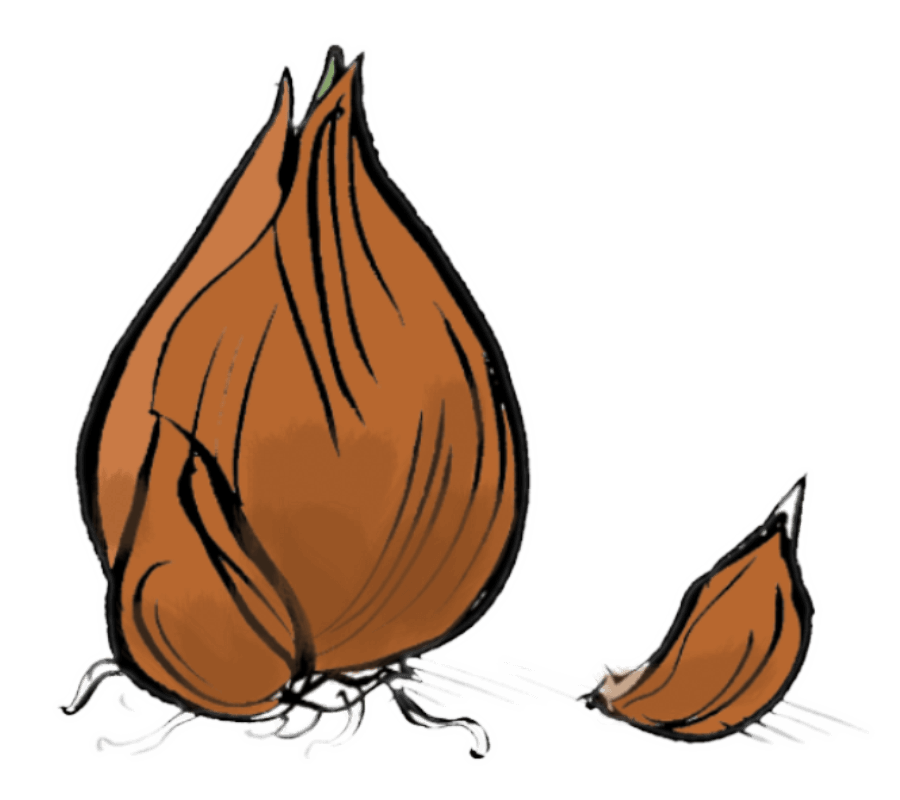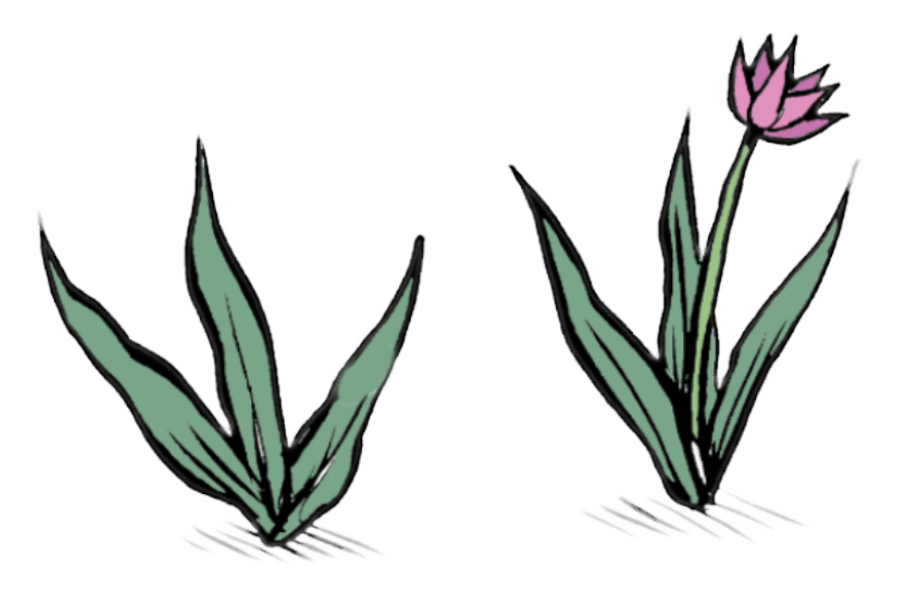Planting and Growing Tulips
Text and Illustrations by Tom Chalkley
There are thousands of varieties of tulips. Some are small plants similar to their wild ancestors. Others are tall, exotic hybrids with huge, ornate blossoms.

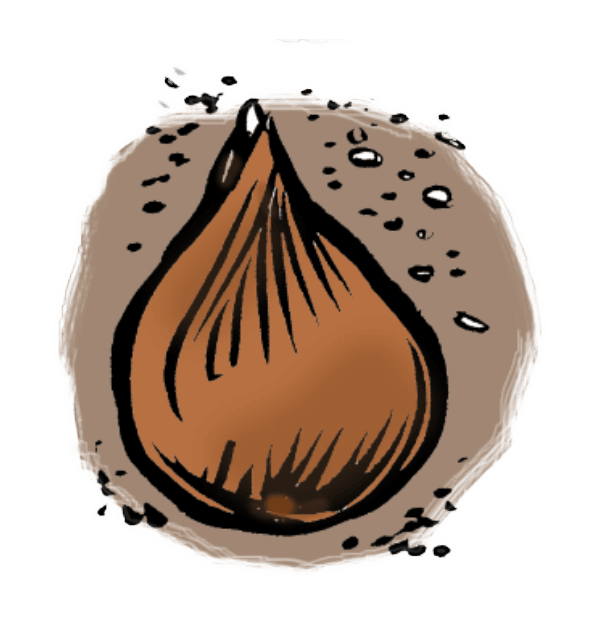
Although tulips can reproduce from seeds, garden tulips are raised from bulbs. Look for bulbs that are firm, with no soft, black, or moldy spots. Take note of specific planting instructions.
Tulips prefer cool weather. In Baltimore, October is the ideal month for planting. The oldest varieties, called “botanicals,” should be planted 2 to 4 inches deep. Horticultural varieties are generally planted 6 to 8 inches deep.
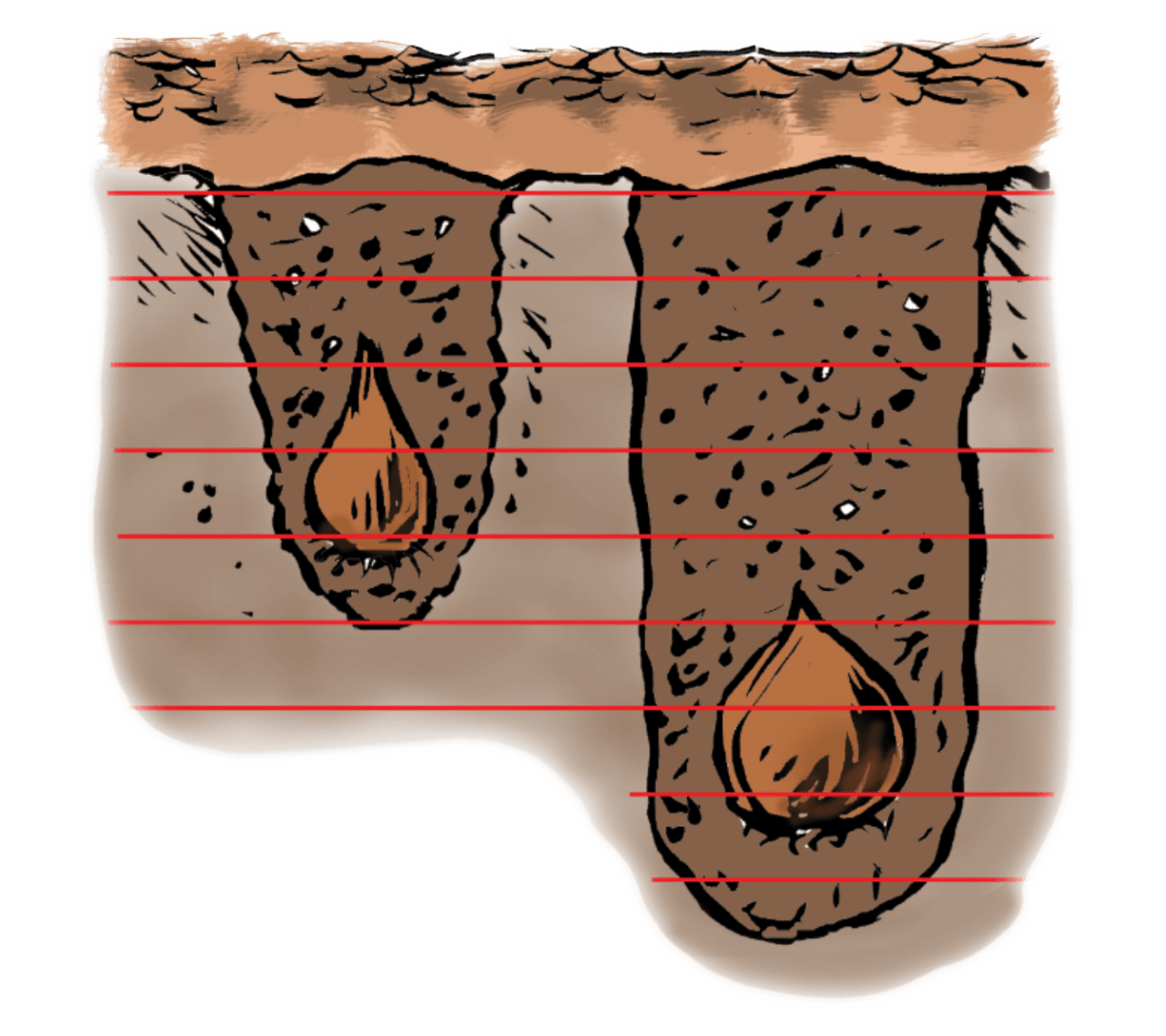
Tulips need light, well-drained soil. If your soil is high in clay, you can mix in sand or gravel, as well as compost, to improve the texture. To give roots room to grow, add sand and organic matter to the bottom of each hole you dig for planting.

Horticultural tulips are usually planted in beds or clusters.
Place bulbs 3 to 5 inches apart.


For a more natural look, avoid placing bulbs in orderly rows. Aim for an irregular pattern.

The smaller botanicals are well-suited for planting singly in rock gardens.
Tulips love sunshine but they suffer in high heat. Consider planting them near deciduous trees where they will get lots of sun in early spring and more shade as weather warms.

After planting in the fall, water the bulbs and cover with a layer of mulch to insulate them over the winter. In early spring, remove the mulch to make way for the new plants.

In Baltimore, tulips generally bloom in April through late May. Enjoy them!
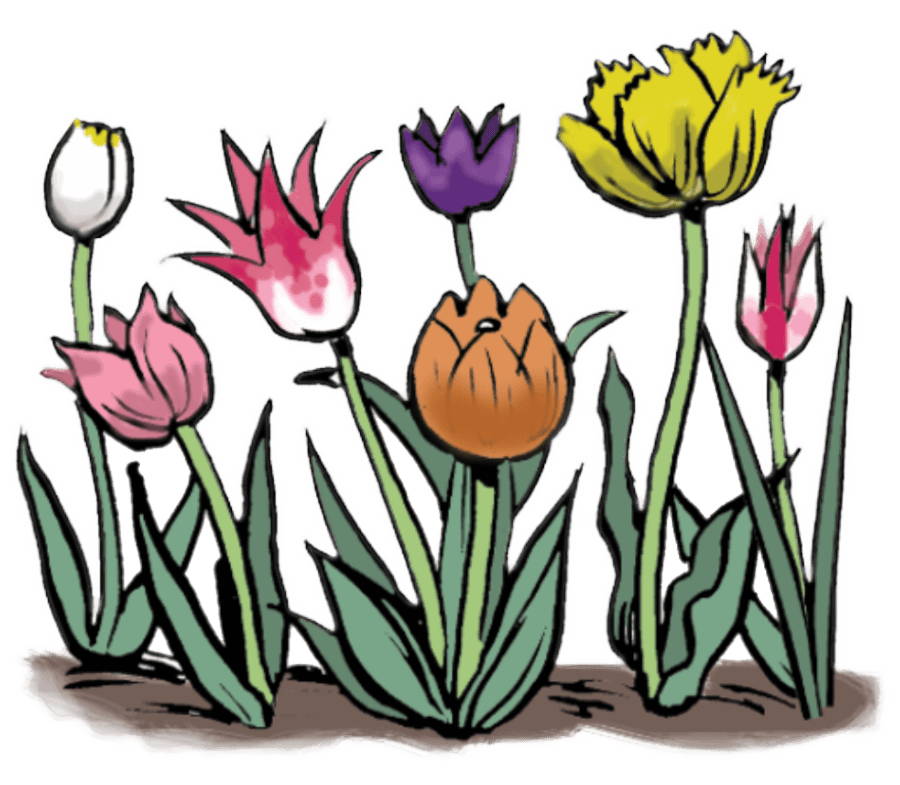
Tulips do not like a lot of watering. If rain is scarce, water just once a week.

To discourage rabbits, spray foliage with cayenne pepper mixed with water. Deer love to eat tulips; they are a growing problem for Baltimore gardeners!
After the petals wilt in late spring, cut the stems. This will keep the flowers from going to seed, and will conserve the plants’ energy in the bulb. Do not cut the leaves; as long as they are green, they are feeding the bulb.

Many tulip gardeners dig up their bulbs after the leaves turn yellow, before hot weather arrives. They clean, dry, and wrap the bulbs in paper bags and store them in a cool, dry, dark place until autumn. Then they replant them. Some gardeners even put bulbs in a refrigerator for 8 to 10 weeks before planting. However, there are many breeds of tulips — especially hardy botanicals that do well if left in the ground.
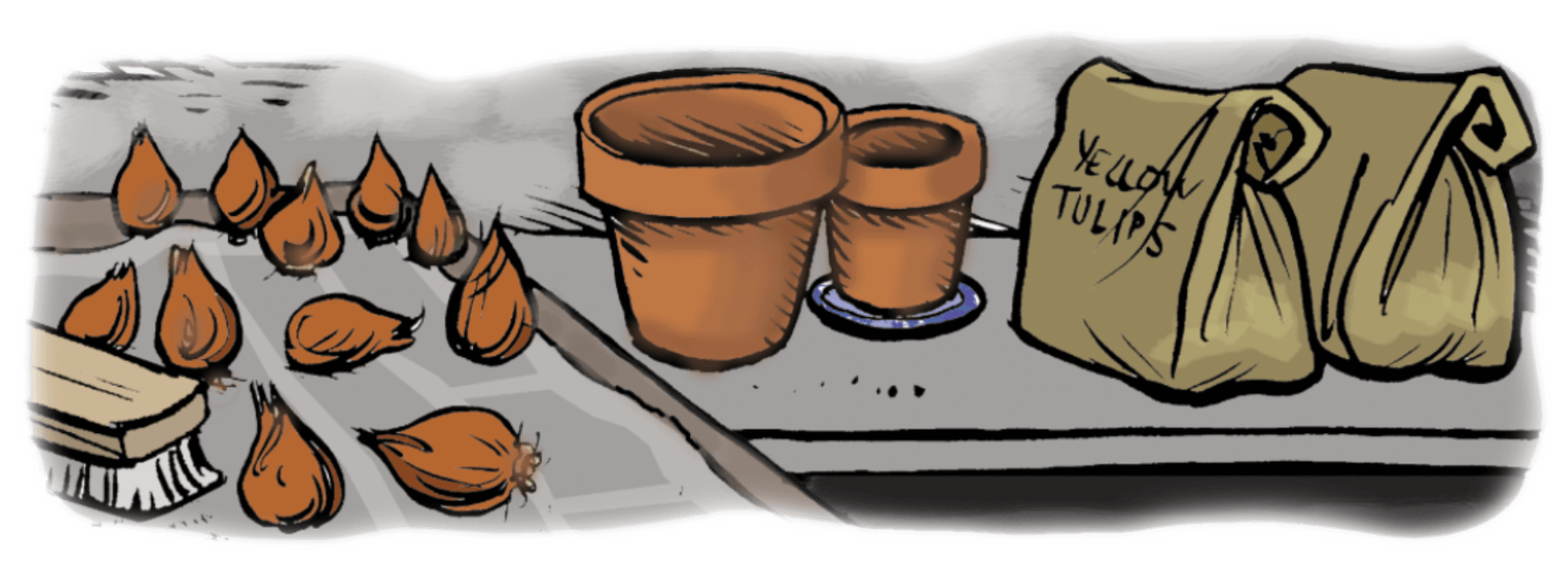
If they are well cared for, tulip bulbs can last for a number of years, producing smaller flowers in their old age. Healthy bulbs will produce “offsets” or “bulblets,” which can be broken off and planted in the fall, giving rise to a new generation.
